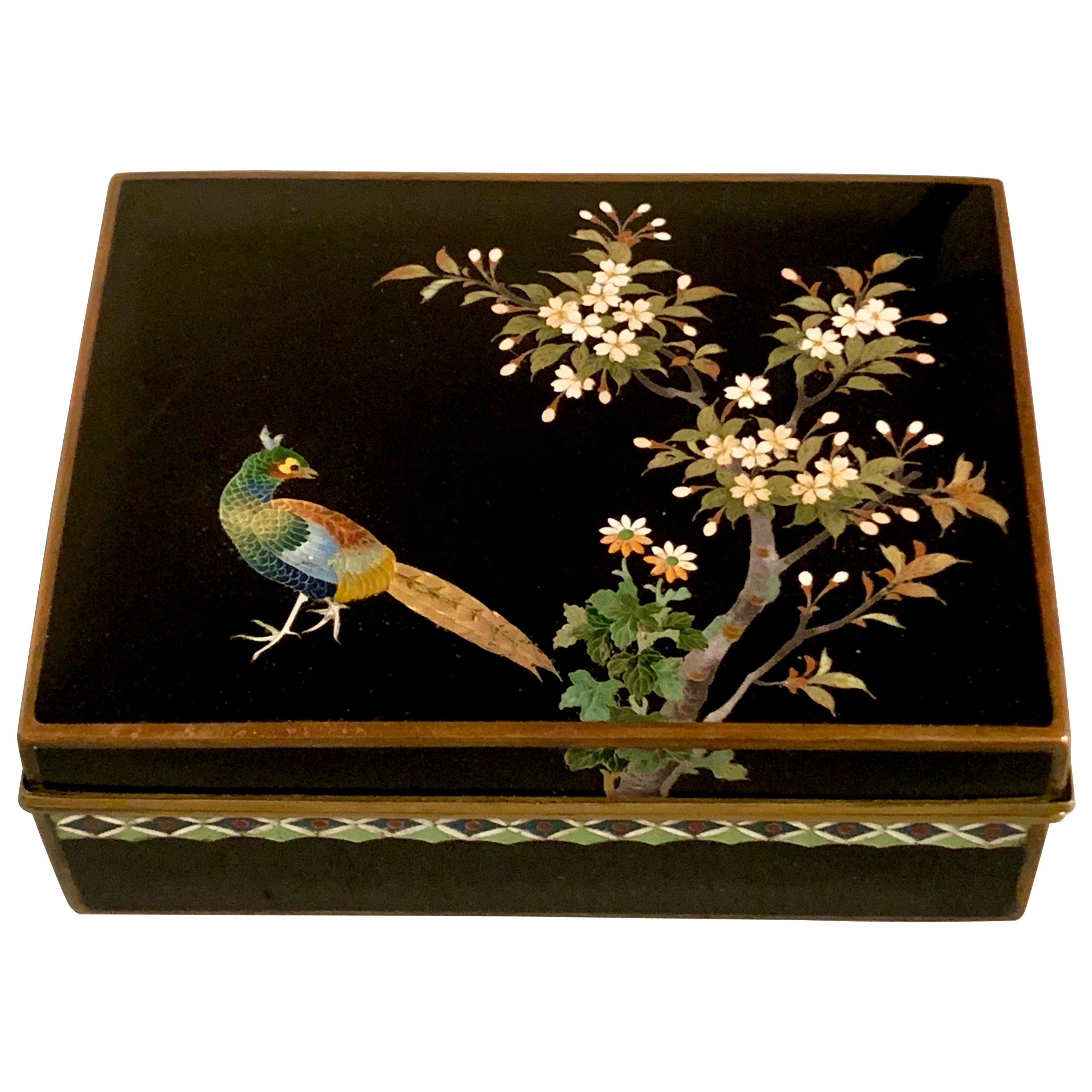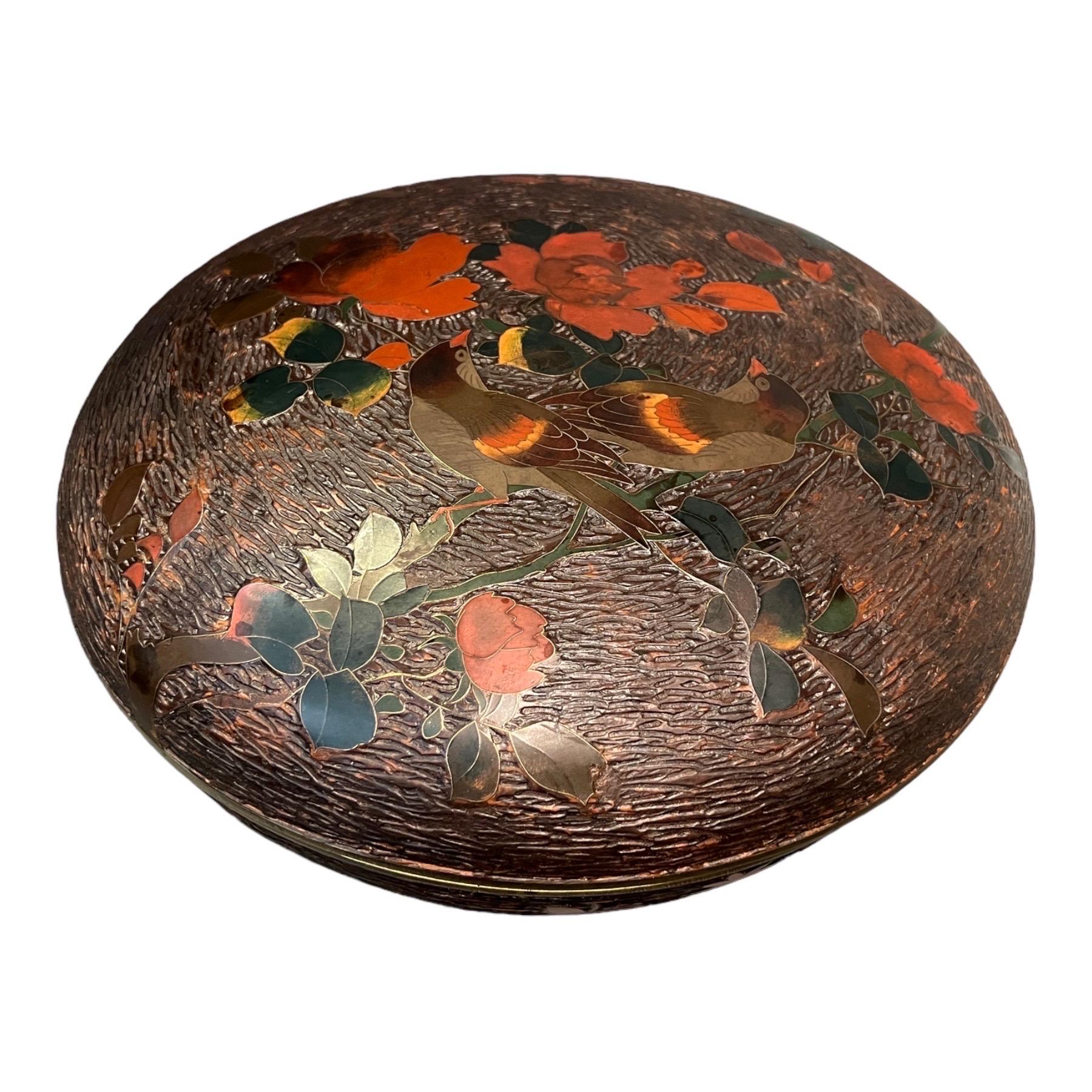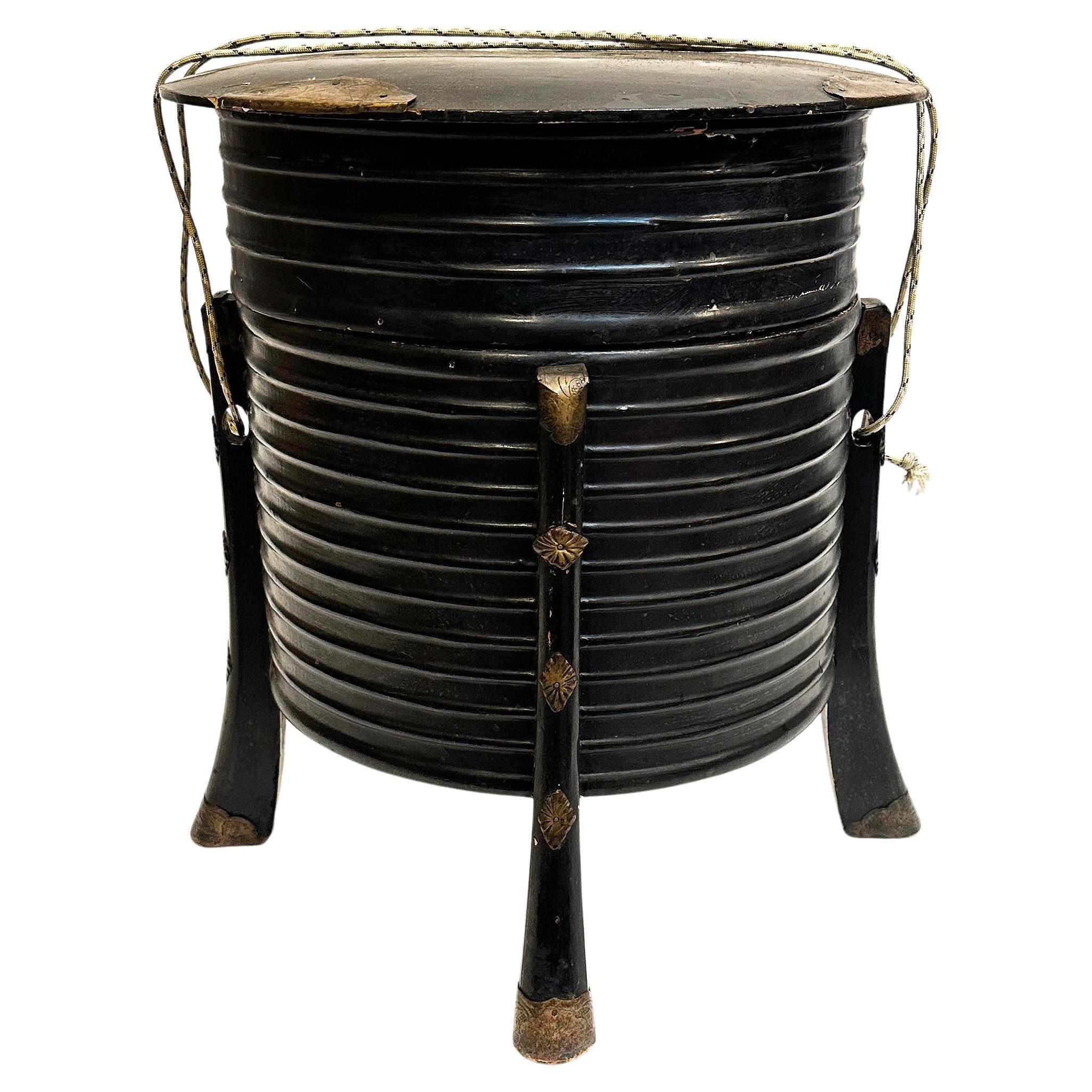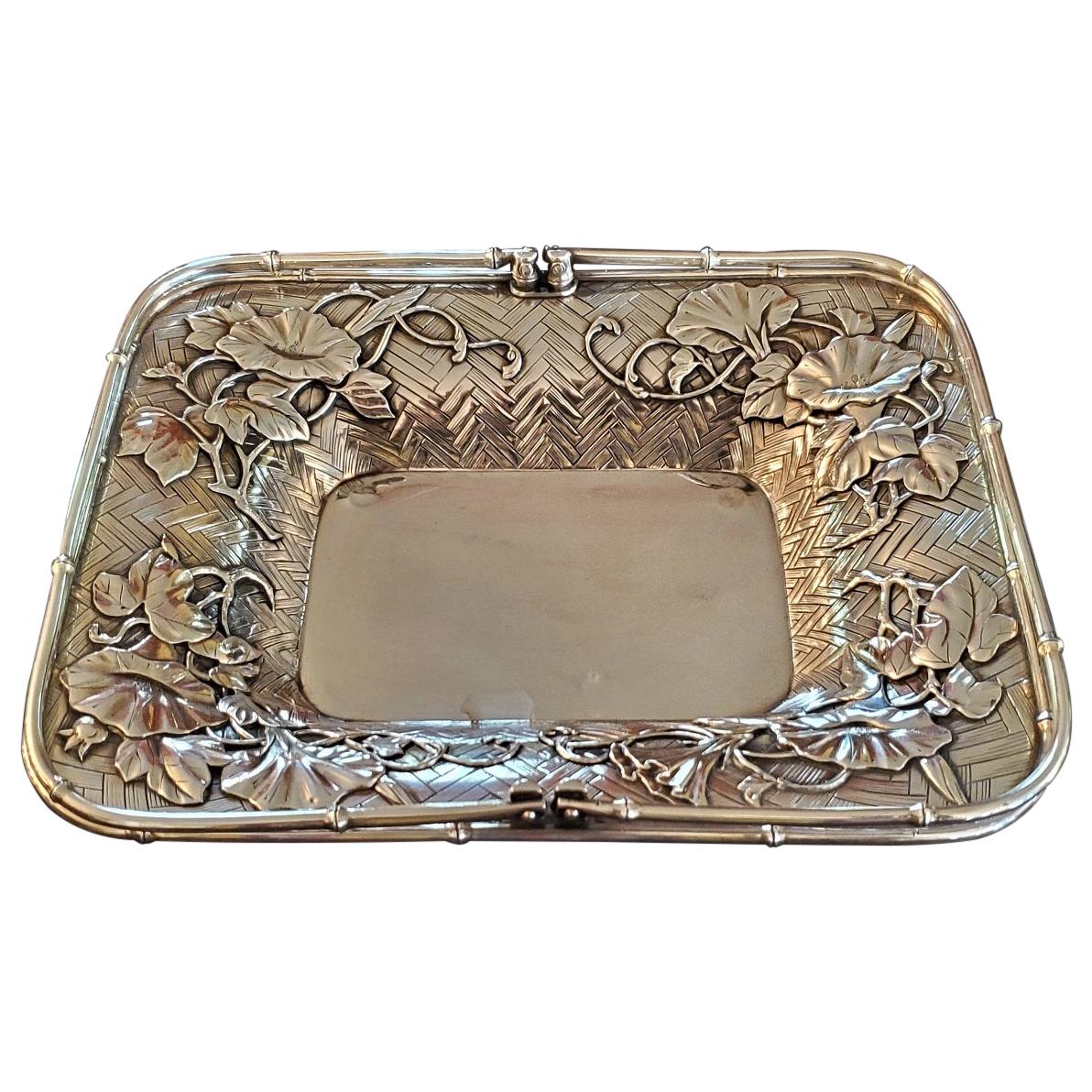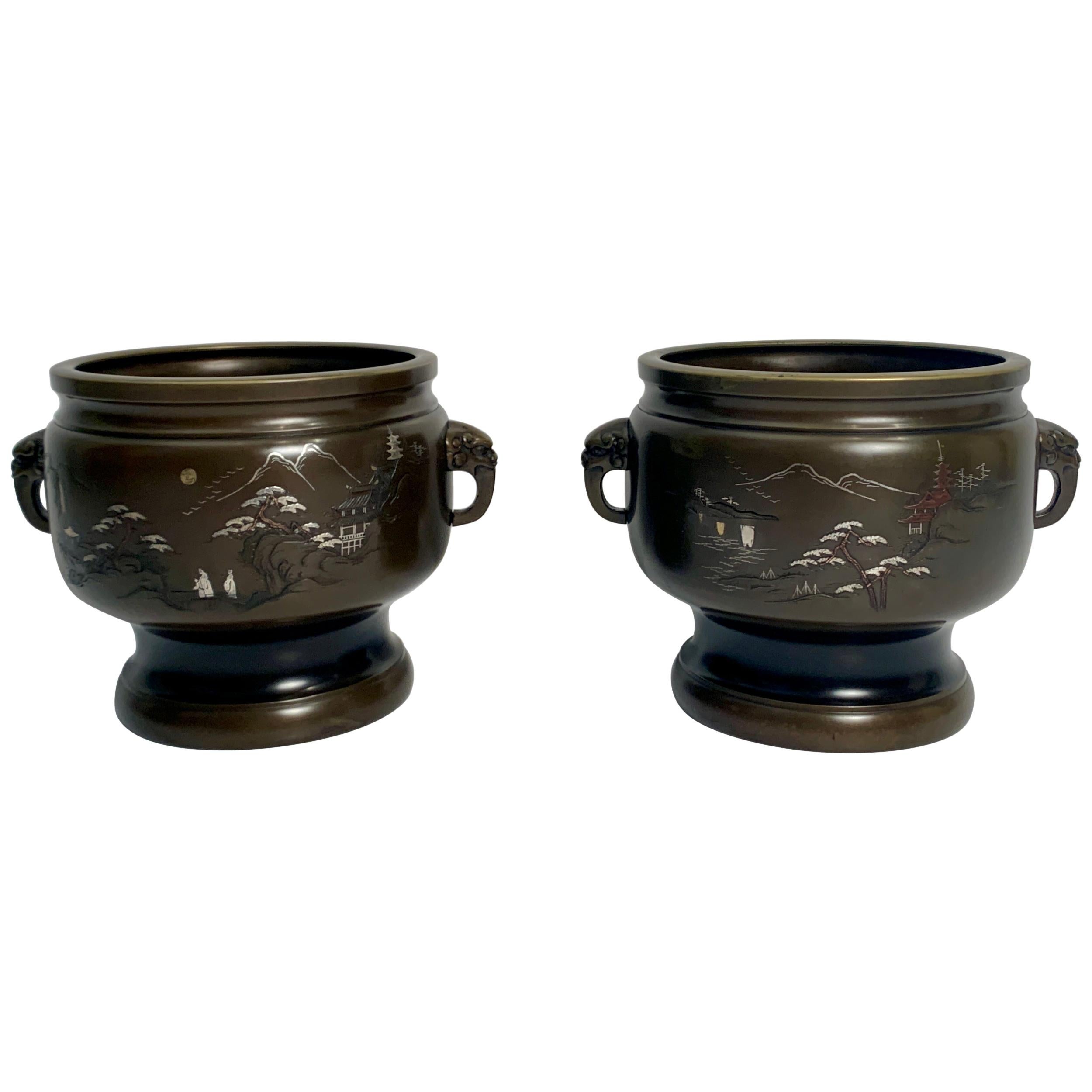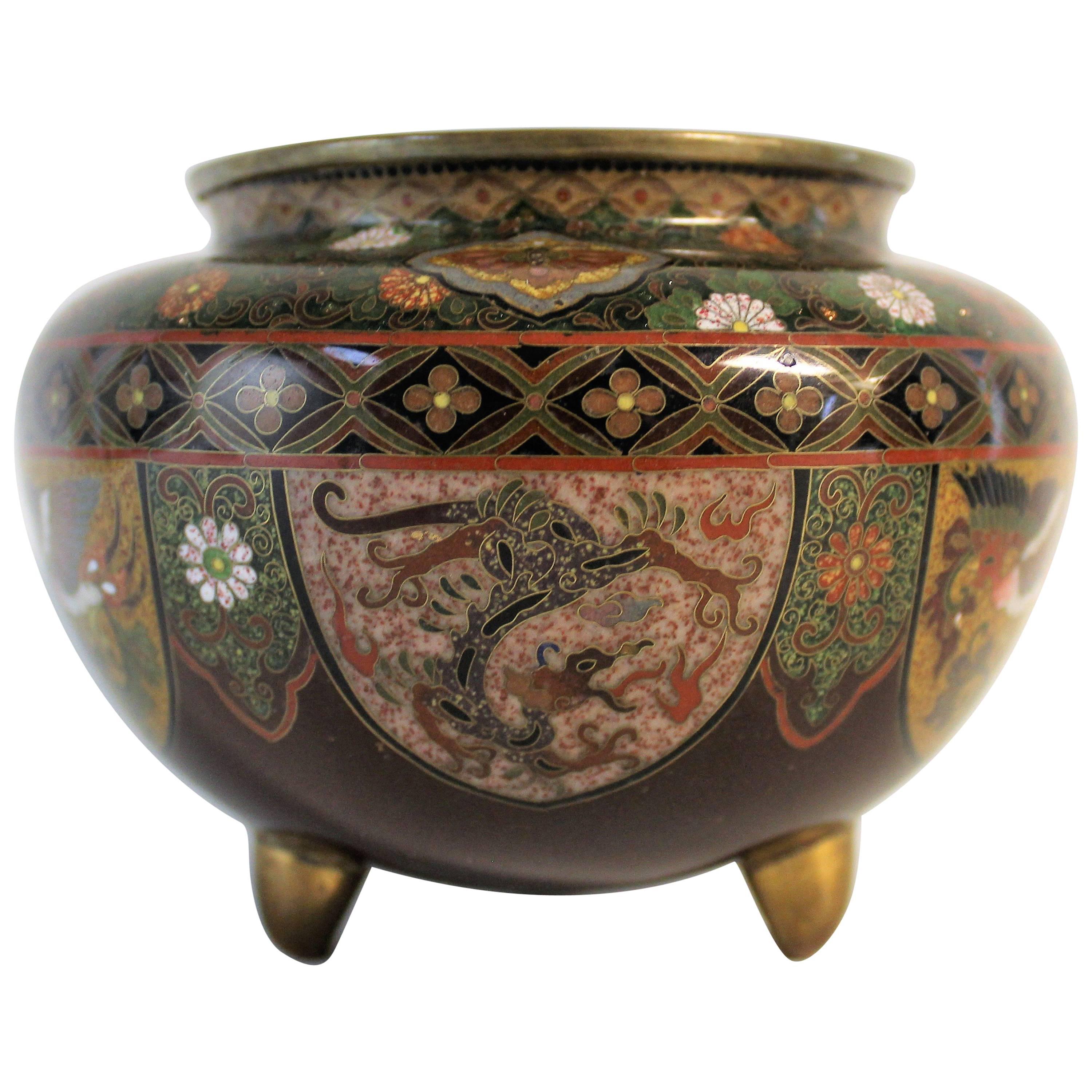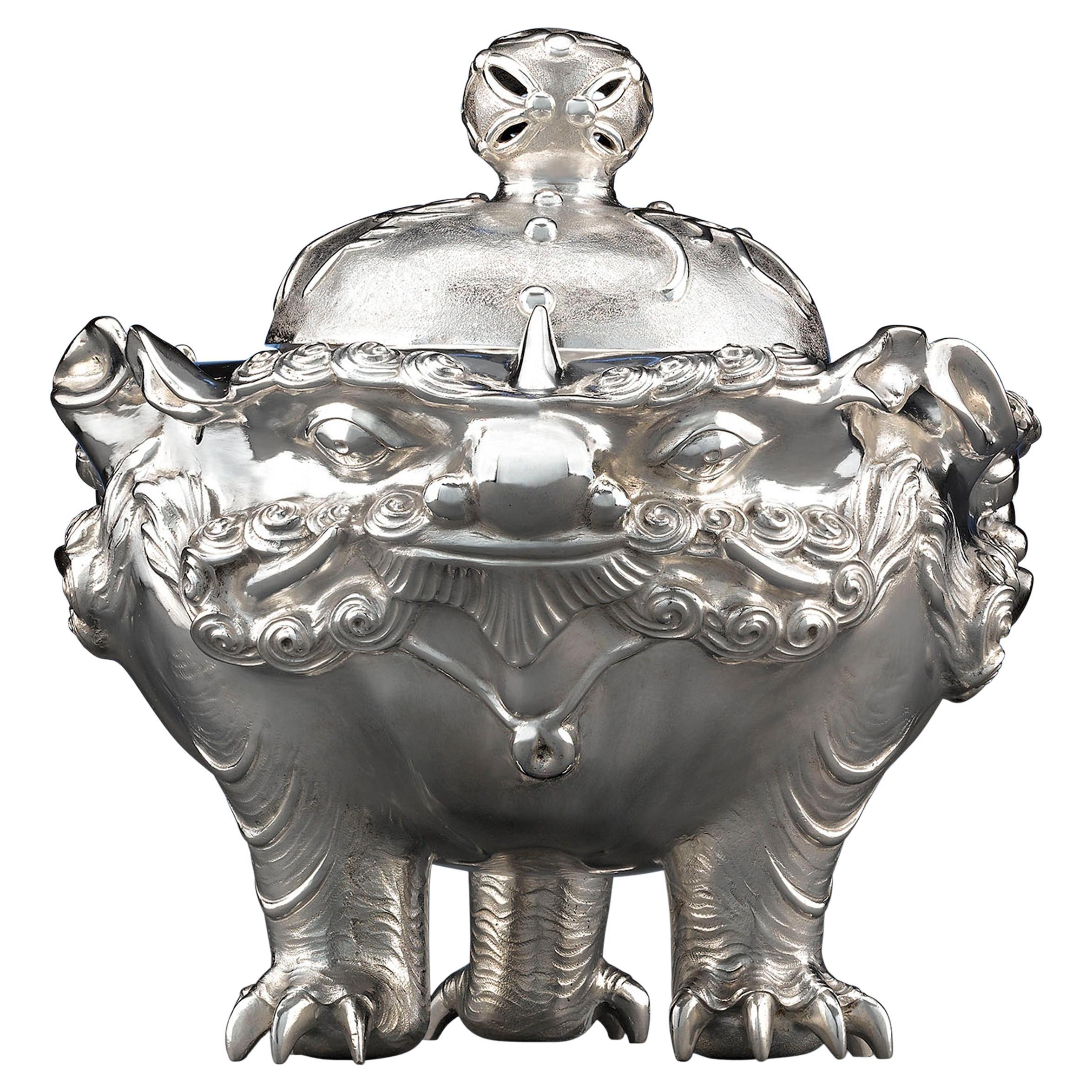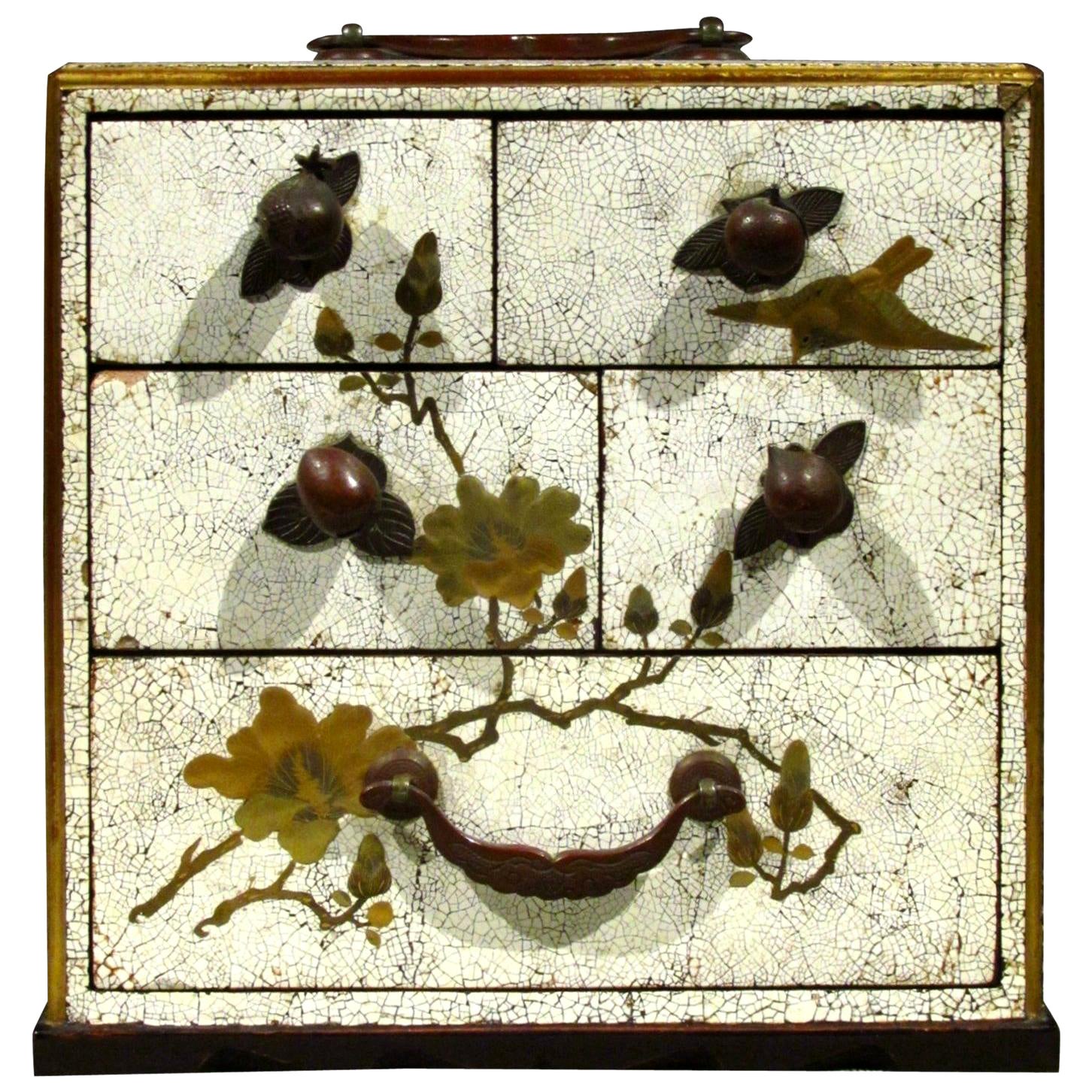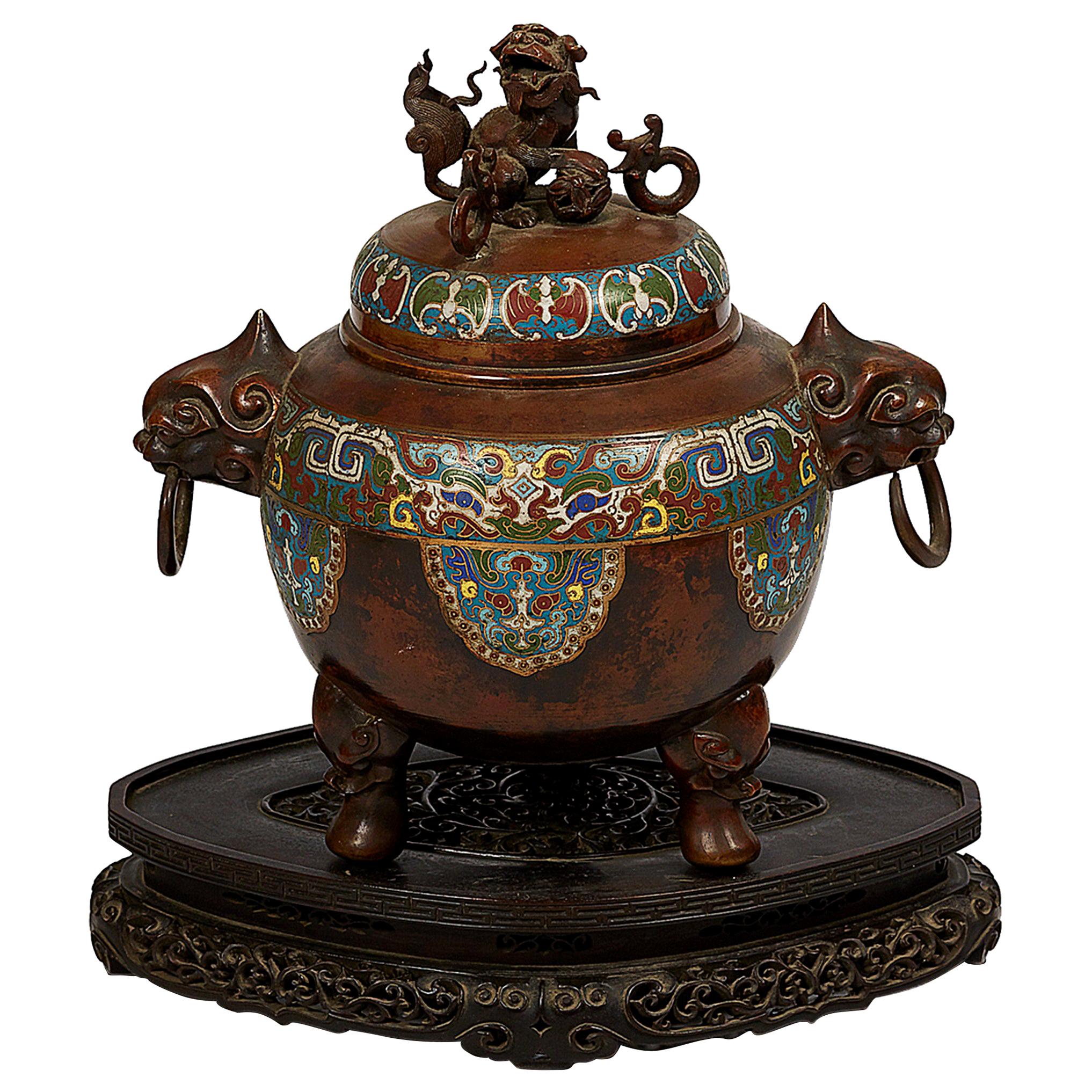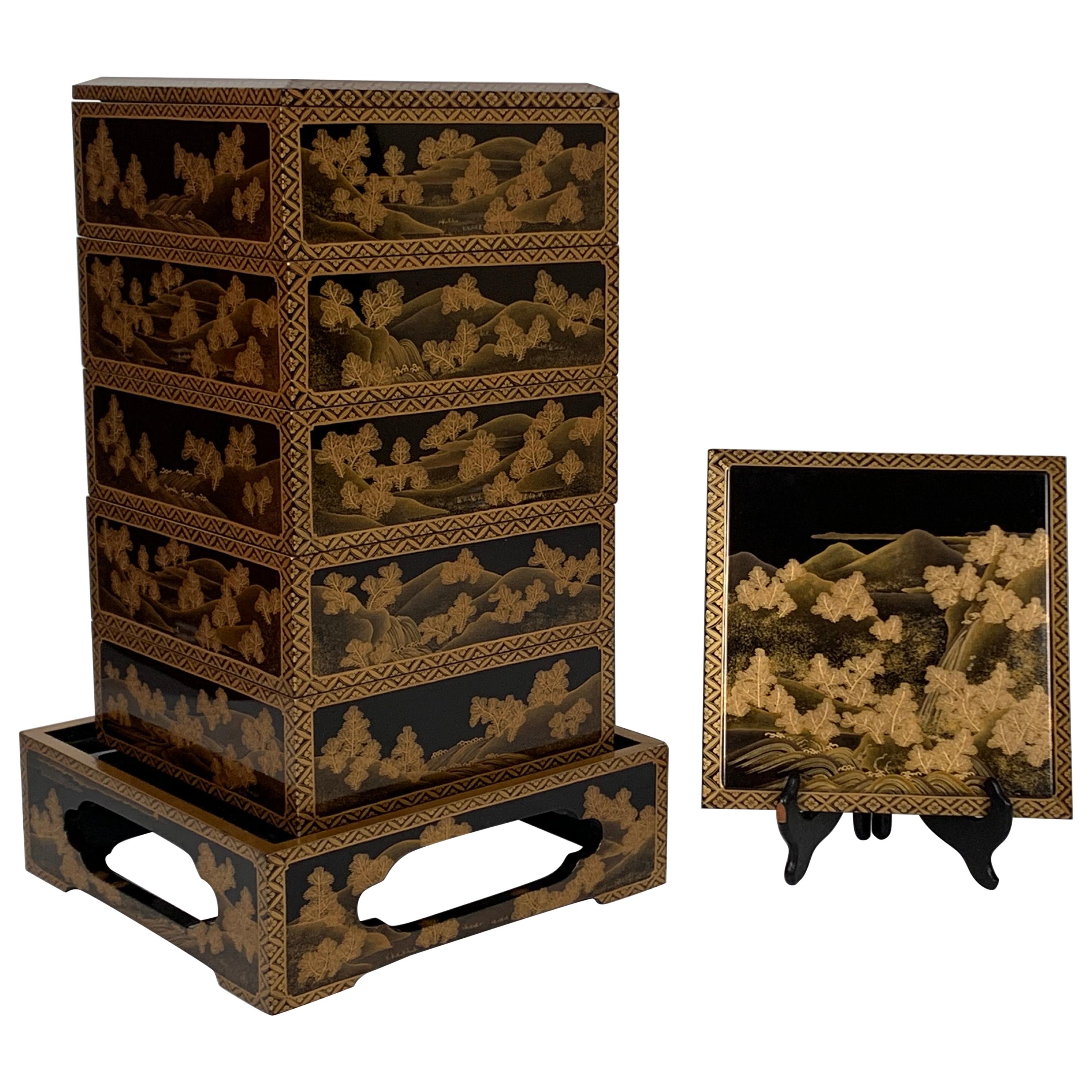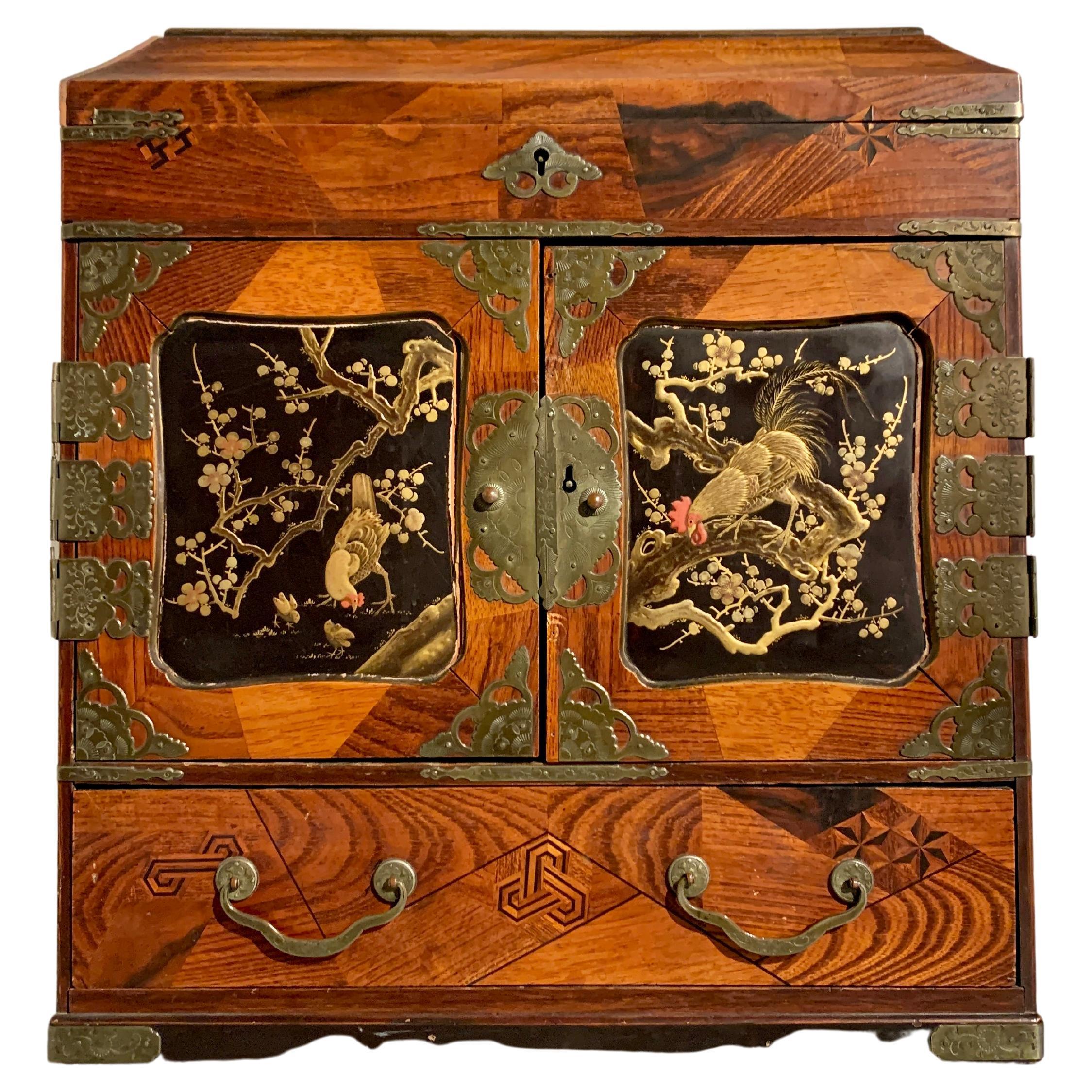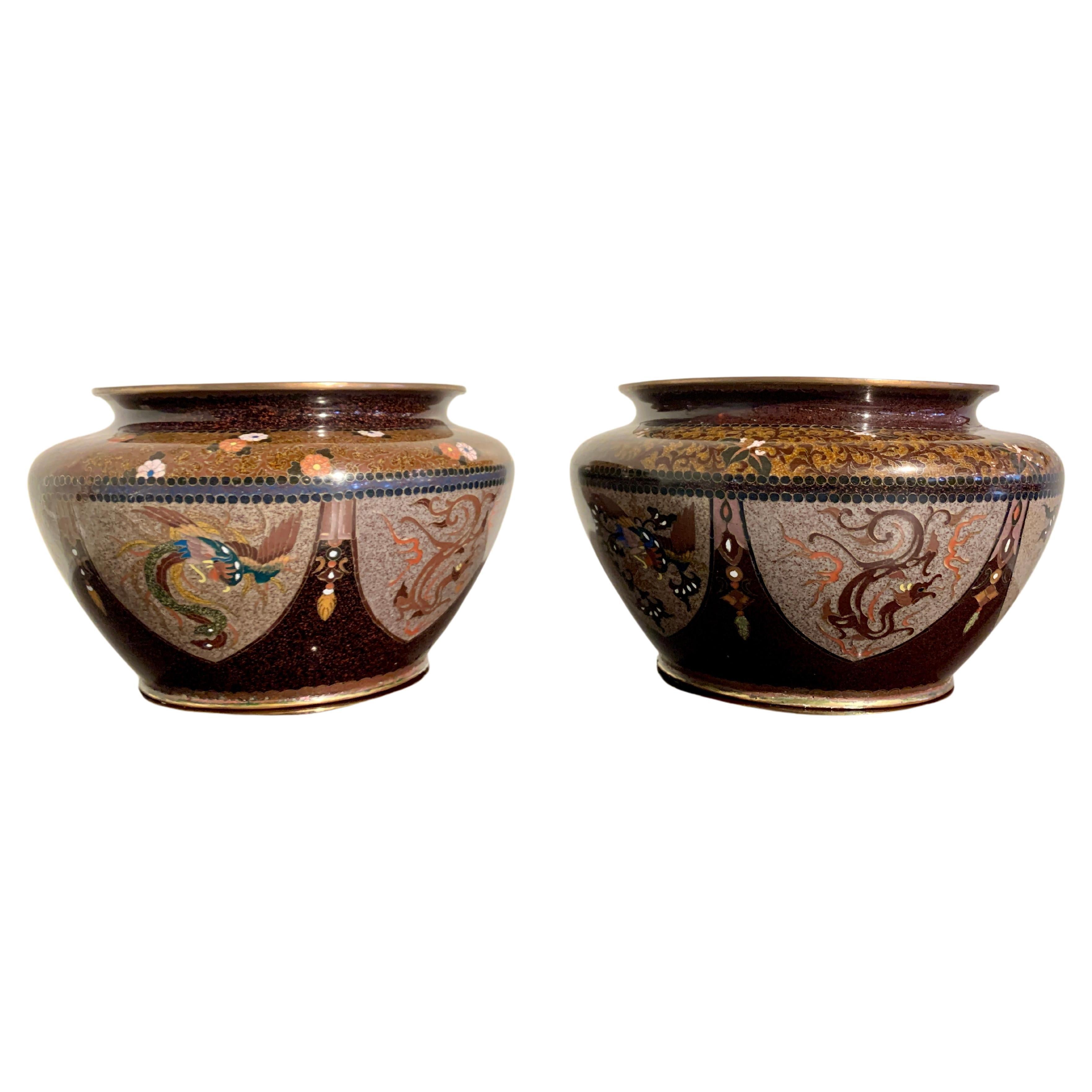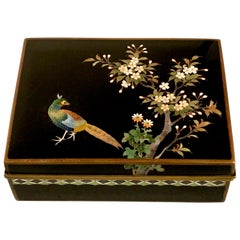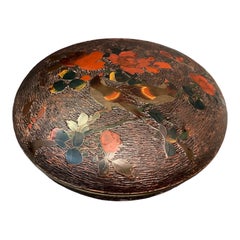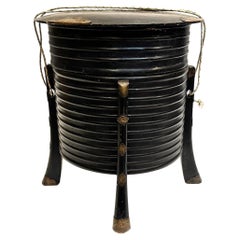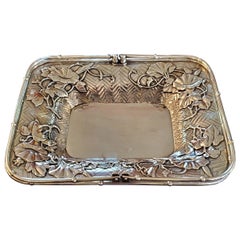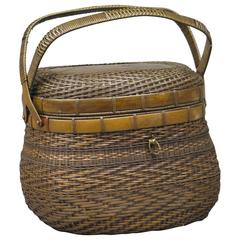
Meiji Period Japanese Woven Copper and Lacquer Basket
View Similar Items
1 of 2
Meiji Period Japanese Woven Copper and Lacquer Basket
$1,800List Price
About the Item
- Dimensions:Height: 6 in (15.24 cm)Width: 7 in (17.78 cm)Depth: 5 in (12.7 cm)
- Style:Meiji (Of the Period)
- Materials and Techniques:
- Place of Origin:
- Period:
- Date of Manufacture:19th Century
- Condition:Wear consistent with age and use. In very good condition and ready to add to your collection.
- Seller Location:New York, NY
- Reference Number:Seller: 73861stDibs: LU85566078233
Authenticity Guarantee
In the unlikely event there’s an issue with an item’s authenticity, contact us within 1 year for a full refund. DetailsMoney-Back Guarantee
If your item is not as described, is damaged in transit, or does not arrive, contact us within 7 days for a full refund. Details24-Hour Cancellation
You have a 24-hour grace period in which to reconsider your purchase, with no questions asked.Vetted Professional Sellers
Our world-class sellers must adhere to strict standards for service and quality, maintaining the integrity of our listings.Price-Match Guarantee
If you find that a seller listed the same item for a lower price elsewhere, we’ll match it.Trusted Global Delivery
Our best-in-class carrier network provides specialized shipping options worldwide, including custom delivery.You May Also Like
Japanese Cloisonne Box by Inaba, Meiji Period, circa 1900, Japan
By Inaba Cloisonne Co.
Located in Austin, TX
A fine Japanese cloisonne hinged box with pheasant and autumn foliage, by Inaba Nanaho and the Inaba Cloisonne Company, Meiji period, circa 1900, ...
Category
Antique Early 1900s Japanese Meiji Metalwork
Materials
Copper, Enamel, Metal
Large Japanese Cloisonné Box and Cover, Japan, Meiji Period, 19th Century
Located in PARIS, FR
A rare Japanese bark tree large cloisonné box on metal from the Meiji period. Usually bark tree cloisonné was on porcelain (totai Shippo)
A very attracti...
Category
Antique Late 19th Century Japanese Metalwork
Materials
Metal
$2,526 Sale Price
25% Off
Japanese Head Bucket (Kubi-Oke), Lacquer, Meiji Period
Located in Point Richmond, CA
Japanese Head Bucket (Kubi-Oke), Lacquer, Meiji period.
The head bucket was used for storing and transporting severed heads. During the Samurai era cla...
Category
Early 20th Century Japanese Meiji Metalwork
Materials
Wood, Lacquer
Japanese Meiji Period Sterling Silver 2 Handled Basket by Katsu Miyamoto
By Miyamoto Shoko 1
Located in Dallas, TX
PRESENTING a GORGEOUS, VERY HIGH QUALITY and EXTREMELY RARE piece of Japanese Meiji Period Sterling Silver 2 Handled Basket by Katsu Miyamoto.
EXQUISITE, EXCEPTIONAL, RARE & IMPORTANT!
This is definitely a Meiji Period piece due to the fact that it is marked with the sterling silver mark “jungin”.
The Meiji period was from 1868 to 1912 and in 1928 a law was introduced in Japan compelling the use of decimal marks for silver.
This pre-dates that decimalization law.
We are of the opinion that it is from circa 1900.
Miyamoto Shoko was founded in 1880 as the first silverware specialty shop. In 1899, Miyamoto Shoko’s silverwares were ordered by the family members of the Emperor of Japan, and to this day, they are making fine and graceful handicrafts with skillful craftsmen.
Loved by numerous customers since the Meiji era, Miyamoto Shoko’s products have also been given to Princess Mako and Princess Kako of Akishino, as well as Princess Aiko Toshinomiya, on their birthdays.
Katsu Miyamoto (宮本勝), in 1880, in order to increase the sales of tobacco and cigarettes to foreigners founded the Moyamoto Shoko company, which produced different silverwares in general and particularly silver cigarette cases. Miyamoto’s first name, Katsu (勝) in some sources is written as “Masaru”, since 勝 kanji can be pronounced in both ways.
This basket is of the HIGHEST QUALITY imaginable!
The top of the basket has the MOST GORGEOUS repousse work of flowers, probably lotus flowers, with leaves and foliage. It has an underlying chevron effect chasing, reflecting parquetry.
The 2 handles are cast in the form of bamboo handles.
The rim of the top likewise is cast as bamboo.
The base is equally stunning in a different way!
It is chased with a chevron effect, like parquetry flooring and the four feet simulate pieces of sliced bamboo with an interlinking gallery of support columns, likewise, simulating bamboo.
The QUALITY of WORKMANSHIP is OUTSTANDING!
The pieces weighs exactly 525 grams.
This piece takes my breath away!
This is one for the SERIOUS COLLECTOR of EXQUISITE AND RARE Japanese silver. You will not find another like it, for sale ANYWHERE ELSE IN THE WORLD …… I know as I have searched!
Provenance: Acquired from a Dallas Private Collector.
Dimensions: 9.6 inches wide, 7.6 inches deep and 2.75 inches tall ( 7.25 inches tall with handles up)
Condition: Very good. It looks like the base 4 legged gallery, has been repaired/re-attached to the base, but otherwise it is excellent and of Museum quality.
The Meiji period (明治時代 Meiji-jidai?), also known as the Meiji era, is a Japanese era which extended from October 23, 1868 through July 30, 1912.[1] This period represents the first half of the Empire of Japan during which Japanese society moved from being an isolated feudal society to its modern form. Fundamental changes affected its social structure, internal politics, economy, military, and foreign relations. The period corresponded with the reign of Emperor Meiji after 1868, and lasted until his death in 1912. It was succeeded by the Taishō period upon the accession of Emperor Taishō to the throne.
Solid silver pieces...
Category
Early 20th Century Japanese Meiji Metalwork
Materials
Sterling Silver
Pair of Japanese Bronze Hibachi with Silver and Copper Inlay, Meiji Period
Located in Austin, TX
An exquisite pair of Japanese mixed metal bronze hibachi with idyllic landscape scenes, Meiji period (1868-1912), late 19th or early 20th century, Japan.
The hibachi of generous proportions, with a high, slightly splayed foot, a short, narrow waist, and a large and wide cylindrical body. The body decorated in the mixed metal technique. The bronze carved and set with inlays of copper and silver to create wonderful landscape scenes. A pair of animal mask handles to the sides. Each hibachi with a cast signature reading ?? (Toyomi?) to the underside.
One side of each hibachi depicting an evening scene, with scholars walking about a mountain retreat, replete with a waterfall, pavilions, pagodas, and pine trees, all shimmering under a full moon.
The other side of the hibachi depicting a daytime scene, with a view of similar pavilions, pagoda, and pine, though with boats also visible in the distance.
Copper inlay has been used for the roofs and the trunks of the pine trees. Silver inlay has been used for the pine needles, scholars, building supports, water, boats, moon, as well as the distant mountains.
Originally used as a simple and elegant space heater...
Category
Antique Late 19th Century Japanese Meiji Metalwork
Materials
Silver, Bronze, Copper
Japanese Meiji Period Cloisonne Bowl
Located in Hamilton, Ontario
Japanese Meiji period cloisonne bowl.
Category
Antique 19th Century Japanese Meiji Metalwork
Recently Viewed
View AllMore Ways To Browse
Heriz Runner Rug
International Tea
Italian Reflector Lamp
Ivory Wool Rug Custom
Knoll Chrome Chair
Large Vintage Platter
Mantel Clock Set
Metal Sculptured Side Table
Mushroom Light
Norway Chairs
Purple Chandelier
Rosette Chandelier
Solid Teak Coffee Table
Swedish Studio Glass
Upholstery Floral Chairs
Used Coffee Shop Furniture
Victorian Antique Illustrations
Vintage Art Nouveau Vase
